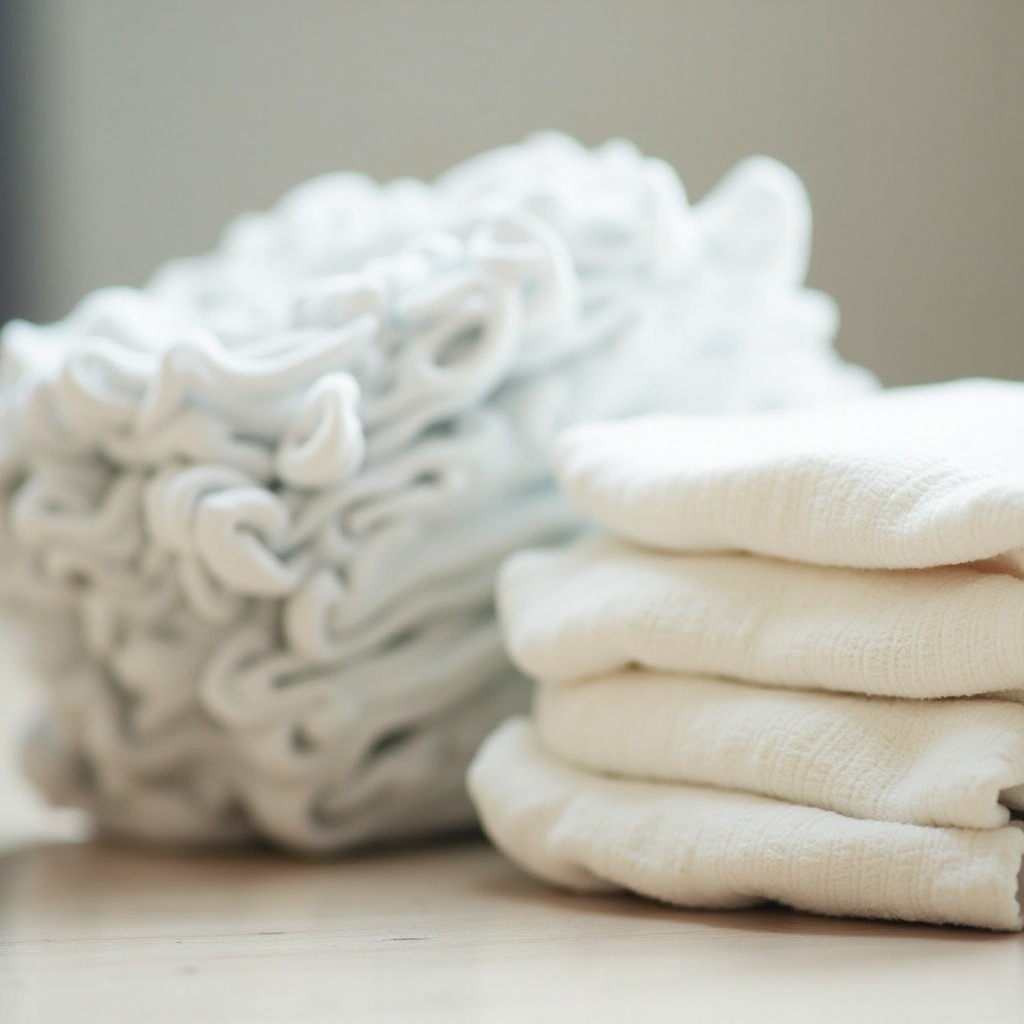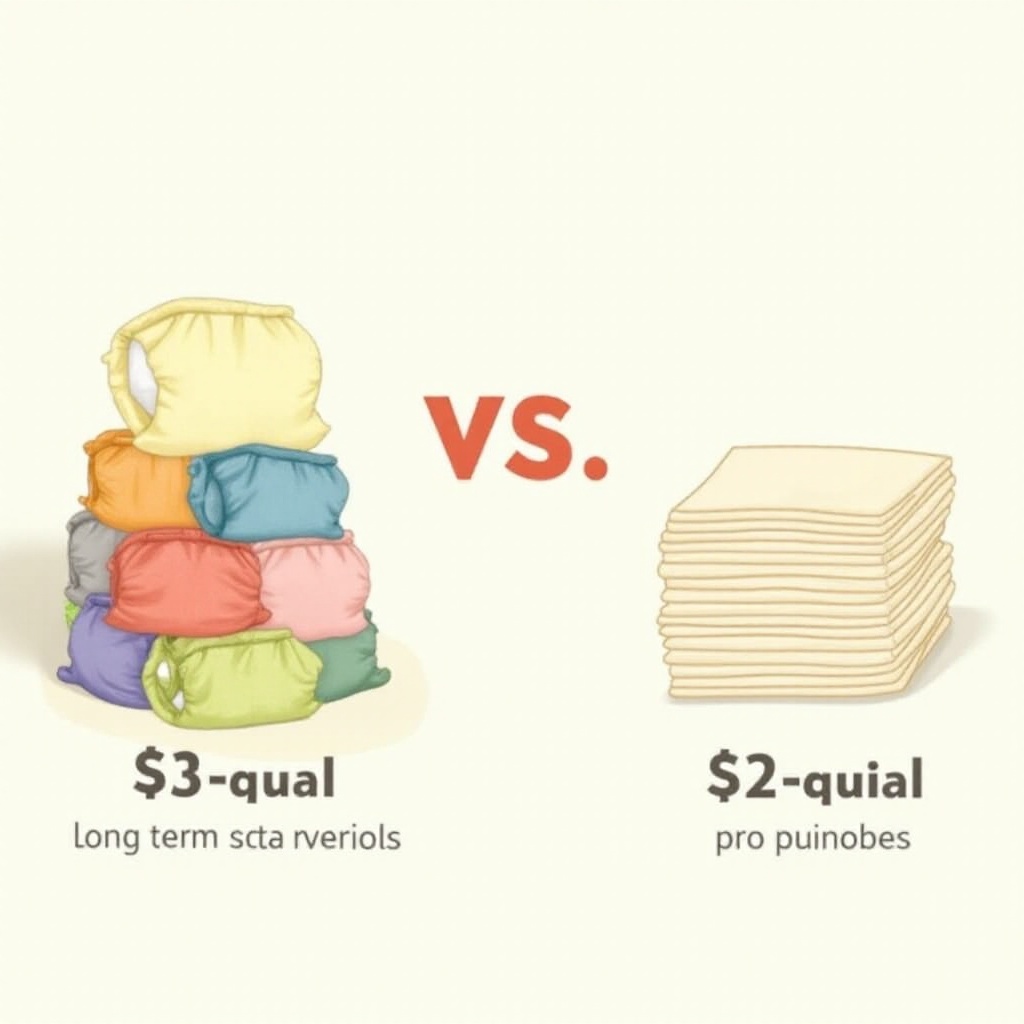Introduction
Choosing the right diaper for your baby is a key decision that involves considering both comfort and cost. Parents often grapple with whether to invest in cloth diapers or to opt for the convenience of disposable ones. This in-depth guide will examine the financial aspects of both options, helping you make a well-informed choice that aligns with your family’s budget and lifestyle.

Initial Costs
The first financial hurdle when diapering your baby is the initial cost. This initial outlay occurs when you get started with either cloth or disposable diapers.
Acquisition Costs for Cloth Diapers
Cloth diapers generally come with higher initial costs compared to disposable diapers. You need to buy multiple diapers upfront to ensure an adequate supply.
– Cloth diapering systems: Purchasing a set of cloth diapers, which includes covers and inserts, can cost between $200 to $500. Newborns typically need around 20-30 diapers per week.
– Accessories: Additional necessary items, such as diaper pails, liners, and wet bags, can add another $50 to $100.
Though the initial investment may seem steep, these costs are primarily one-time expenses, except for possible upgrades as your baby grows.
Acquisition Costs for Disposable Diapers
Disposable diapers, by contrast, require a lower initial financial investment.
– First month supply: A newborn uses around 240 diapers per month, costing approximately $70 to $100.
– Ongoing purchases: Since disposable diapers are not reusable, this cost recurs throughout your baby’s diaper-wearing years. On average, your baby will use about 3,000 diapers in their first year, which results in significant recurring costs over time.
Although disposable diapers appear cheaper initially, the ongoing expense adds up quickly, making them more costly in the long term compared to cloth diapers.

Long-term Costs
While the initial costs present one financial aspect, the long-term expenses of diapering cannot be overlooked.
Reusability and Lifespan of Cloth Diapers
Cloth diapers are notably cost-effective in the long run due to their reusability.
– Lifetime use: High-quality cloth diapers can last through multiple children, maximizing their value.
– Savings: Parents who use cloth diapers might spend between $800 to $1,000 from birth to potty training, with additional minimal costs arising from cleaning supplies and rare replacements. Over time, especially with multiple children, the cost-efficiency of cloth diapers becomes apparent.
Disposable Diapers Usage Over Time
Disposable diapers require continuous purchases by their very nature.
– Monthly expenses: On average, you’ll spend about $70 to $100 per month on disposable diapers.
– Total costs: From birth to potty training, the total cost accrues to roughly $2,000 to $3,000, assuming no significant price changes. This recurring expense is a critical factor in the overall cost comparison.
The sheer number of disposable diapers required for a single child quickly escalates, underscoring the long-term economic advantage of reusable cloth diapers.

Maintenance Costs
The impressive long-term savings of cloth diapers come with their own set of maintenance costs. Conversely, disposable diapers entail different financial burdens.
Washing and Detergents for Cloth Diapers
Maintaining cloth diapers involves regular washing.
– Laundry: You’ll need to wash diapers every 2 to 3 days, involving time, water, electricity, and detergent. Average washing costs might range from $0.50 to $1 per load, possibly leading to an annual cost of $100 to $150.
– Detergents and extras: Special detergents formulated for cloth diapers can cost $20 to $30 annually. Adding costs for occasional bleach and fabric softeners, you’re looking at another $20 yearly.
Although the washing costs add up, they generally remain lower than the overall expenses of disposable diapers.
Regular Purchasing of Disposable Diapers
Disposable diapers eliminate the need for washing but require constant purchasing.
– Recurring costs: Regular purchasing of disposable diapers results in a monthly cost, which averages out to about $70 to $100. This quickly accumulates, creating ongoing financial pressure throughout the diapering years.
While disposable diapers spare you the effort of laundry, their continuous purchase cycle ensures that costs continue to climb, highlighting another economic benefit of cloth diapers.
Environmental and Health Considerations
Besides financial implications, other important factors like environmental and health impacts must be considered in your diaper choice.
Environmental Impact and Long-Term Savings
Cloth diapers offer notable environmental benefits.
– Reduced landfill waste: A single cloth diaper can replace hundreds of disposable diapers, substantially lowering landfill contributions.
– Water usage: Though cloth diapering uses water for washing, it generally has a lesser environmental impact compared to the production and disposal processes of disposable diapers, which also involve considerable water and energy use.
These environmental aspects not only promote sustainability but can translate into fewer resources used over time, enhancing the long-term savings of cloth diapers.
Health Benefits and Potential Medical Cost Savings
Health considerations are also significant.
– Skin irritation: Cloth diapers are often gentler on baby’s skin, reducing occurrences of diaper rash and potential medical treatments.
– Chemical exposure: Disposable diapers contain chemicals that some parents prefer to avoid. Using cloth diapers can reduce the chance of chemical-related skin reactions.
Reduced medical costs due to fewer rashes or skin reactions further enhance the financial appeal of cloth diapers.
Conclusion
Choosing between cloth and disposable diapers involves understanding their distinct financial implications. Disposable diapers offer initial convenience with lower startup costs, but their long-term expenses are significantly higher due to continuous buying. Cloth diapers, despite their initial costs and maintenance needs, provide substantial savings over time, particularly when used for multiple children. Additionally, considering factors like environmental impact and health benefits, cloth diapers present a compelling argument for cost-conscious and eco-friendly parenting.
Frequently Asked Questions
Are cloth diapers really cheaper in the long run?
Yes, cloth diapers often prove cheaper over time. Despite higher initial costs, their reusability and longevity lead to significantly lower overall expenses compared to the recurring cost of disposable diapers.
How many cloth diapers do I need for my baby?
For a newborn, you may need 20-30 cloth diapers to accommodate frequent changes. As your baby grows, you might manage with about 15-20 diapers, washing every 2-3 days to maintain a steady supply.
What are the hidden costs of using cloth diapers?
Hidden costs can include additional laundry expenses, the need for special detergents, occasional replacement of worn-out diapers, and accessories like diaper pails and liners. However, these costs are typically lower than the cumulative outlay for disposable diapers.
